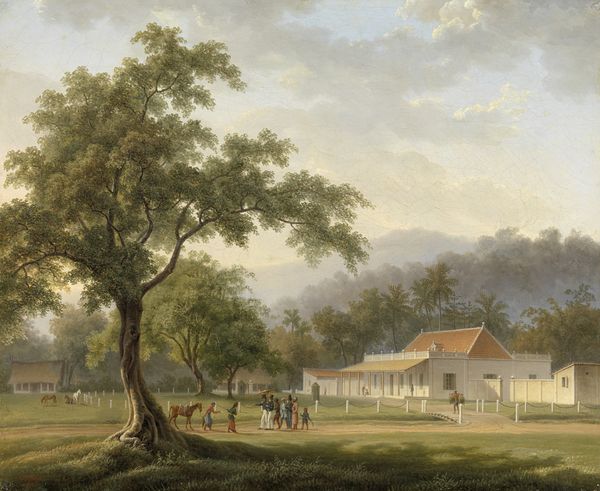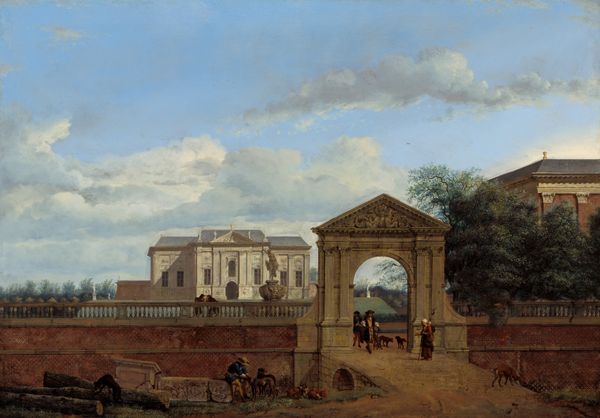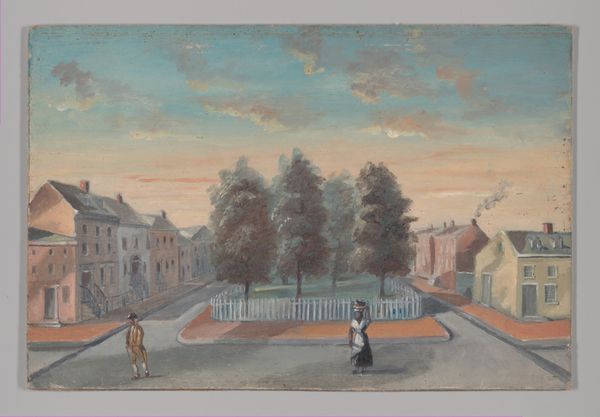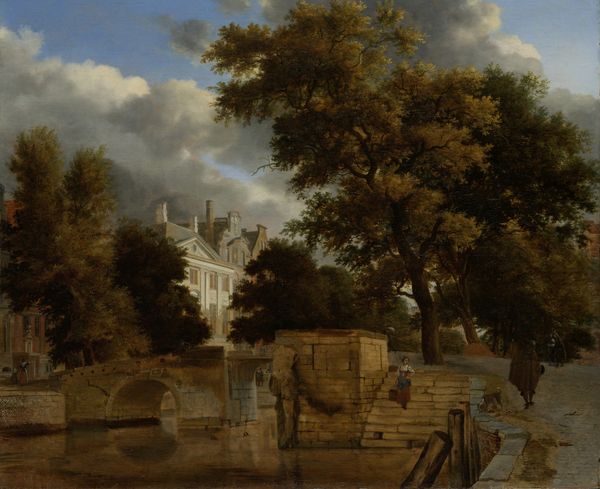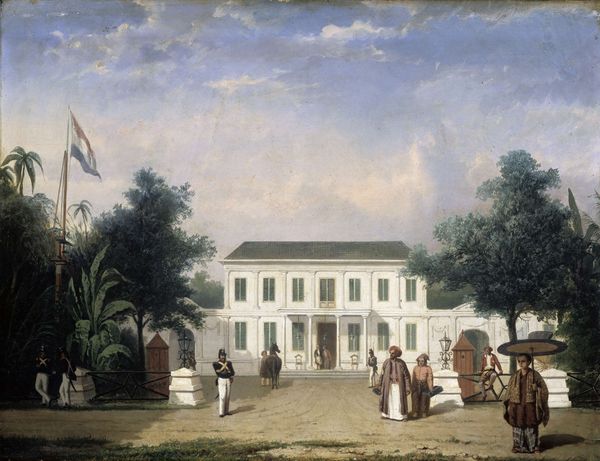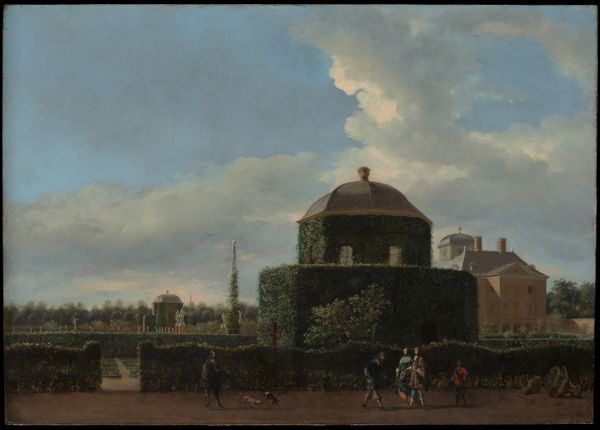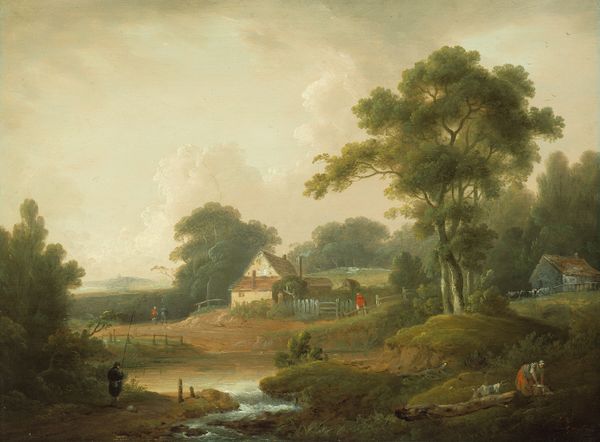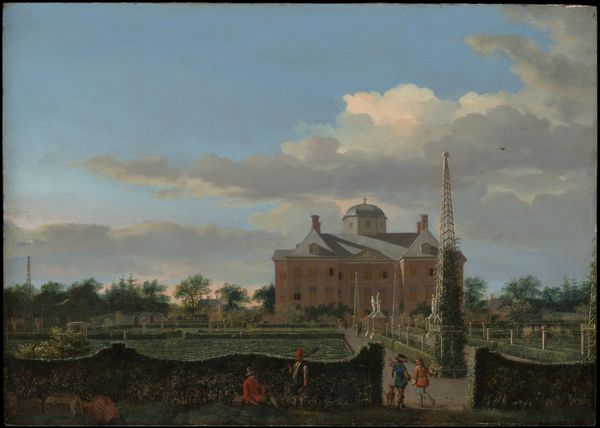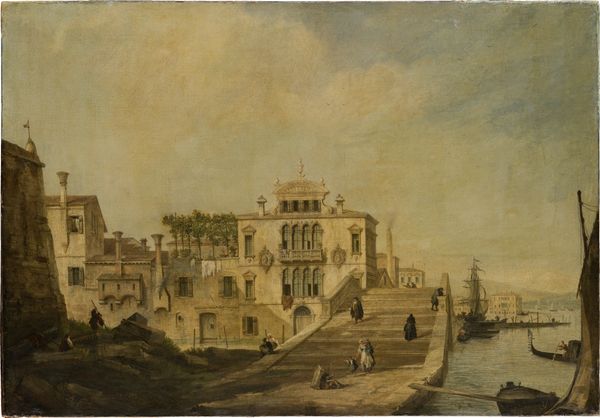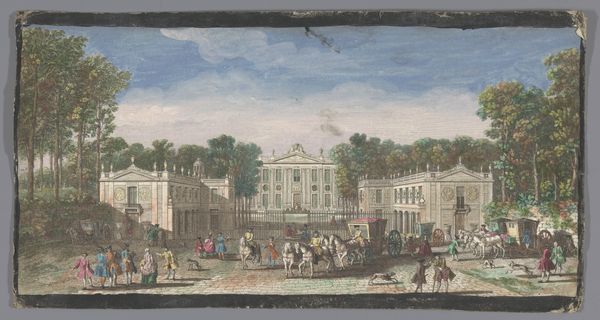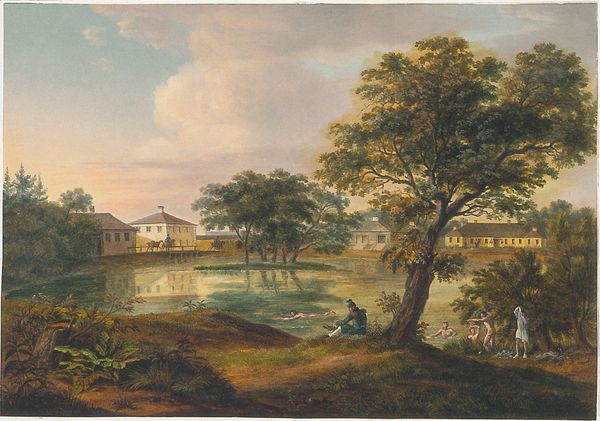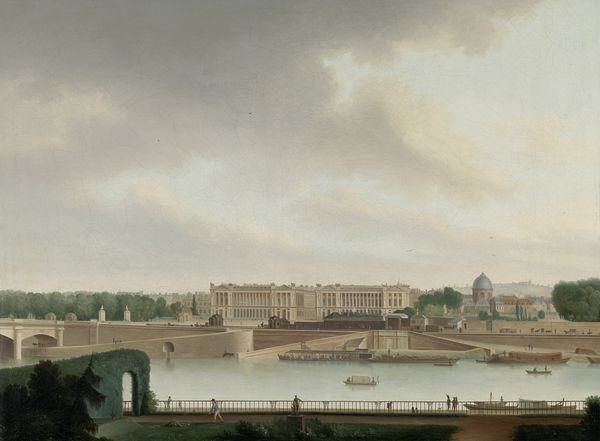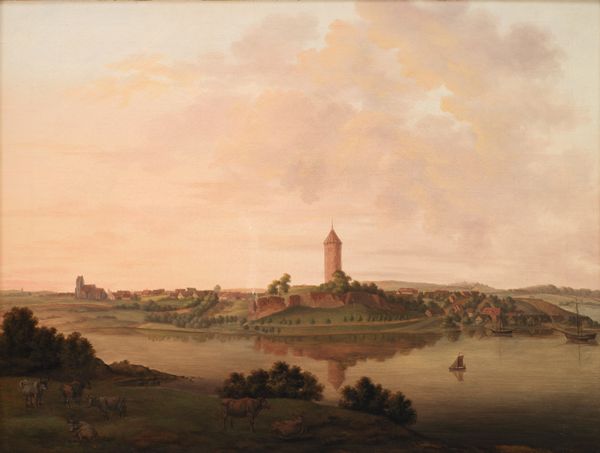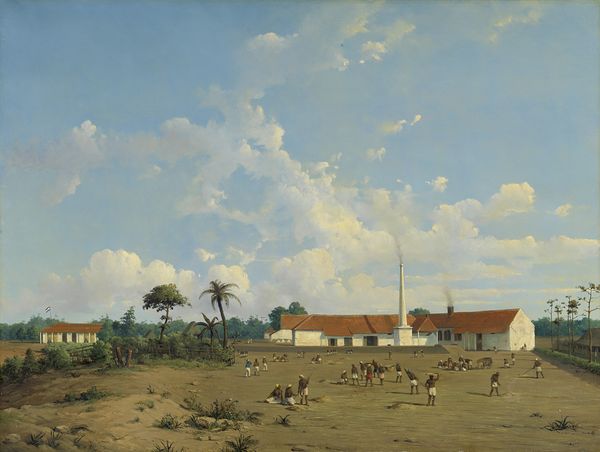
Front View of Buitenzorg Palace during the Earthquake of 10 October 1834 1834 - 1836
0:00
0:00
willemiitroost
Rijksmuseum
painting, watercolor
#
neoclacissism
#
painting
#
landscape
#
watercolor
#
cityscape
#
watercolour illustration
#
history-painting
#
academic-art
#
realism
Dimensions: height 52 cm, width 77 cm, depth 5.5 cm
Copyright: Rijks Museum: Open Domain
Willem Troost painted this image of the Front View of Buitenzorg Palace during the Earthquake of 10 October 1834, with oil on canvas. What strikes the eye is not just the ruined palace, but the figures fleeing in terror, and the deer, seemingly undisturbed. The image of people running from destruction is a powerful one, echoing through time. Think of the terrified figures in Renaissance depictions of the apocalypse. The emotional intensity conveyed by their flight taps into our collective memory of catastrophe. The earthquake, a symbol of unpredictable and destructive forces, has been seen across cultures and epochs as divine wrath, or nature's fury. Yet, the serene presence of the deer grazing in the foreground presents an intriguing juxtaposition. Deer often symbolize peace and renewal. Here, they stand as silent witnesses, perhaps suggesting that even amidst chaos, life finds a way to persist. This interplay of destruction and tranquility engages us on a subconscious level, reminding us of the cyclical nature of existence. The image of people in flight persists, taking on new forms, mirroring our deepest fears and hopes across generations.
Comments
rijksmuseum about 2 years ago
⋮
In 1834, when J.C. Baud was the governor-general, an earthquake struck Buitenzorg (Bogor) Palace. Upon his return to the Netherlands Baud engaged Willem Troost to paint two pictures of his former residence: one before and one after the earthquake. Troost had never been to Indonesia and must have relied on sketches made by other artists. The injured woman on the chairs in the left foreground is probably Baud’s wife.
Join the conversation
Join millions of artists and users on Artera today and experience the ultimate creative platform.
